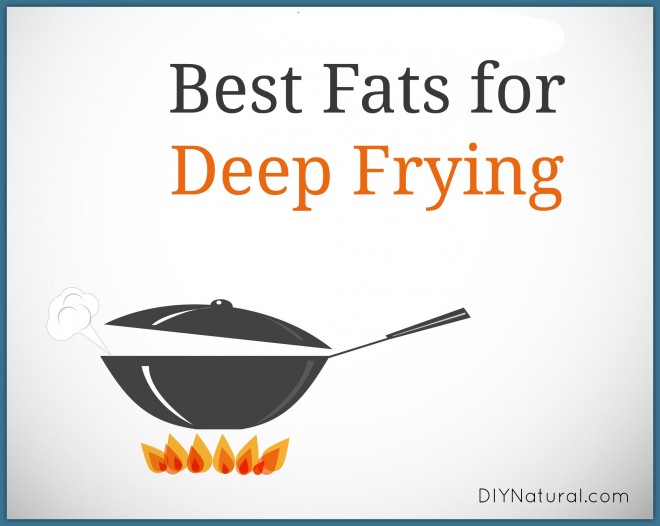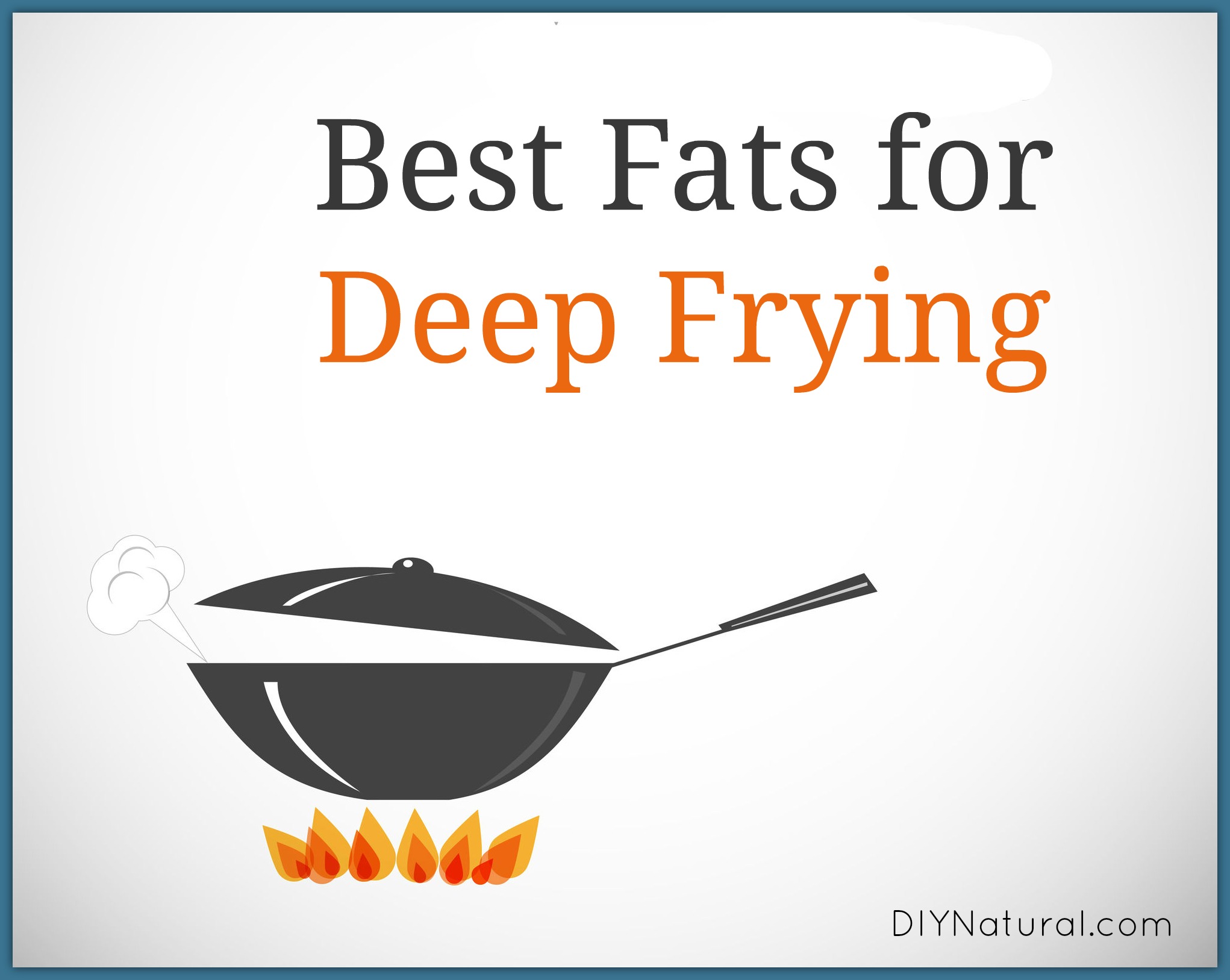
We took a deep and greasy look into some of the most popular cooking fats to learn which is the best fat for deep frying. What we discovered is that many common beliefs about fat and cooking with fats are actually myths. Our findings might shock you, but then again, they might just mean that you can deep fry your own doughnuts and fried chicken without fear.
Myth #1 – Deep fried foods are bad for you.
While I wouldn’t recommend eating French fries and doughnut holes seven days a week, properly deep fried foods may not be as bad as you think. It all comes down to proper frying.
So what is proper frying? First, a consistent temperature. You want to deep fry foods at 350-375°F. At this temperature, the foods submerged in the fat almost instantly form a surface seal that the fat cannot penetrate. That seal locks the food’s natural moisture inside, letting it steam and cook the food from the inside out. When the cooking fat’s temperature is too low, the seal takes longer to form, letting more fat seep into your food and making the whole frying process take longer. If the cooking fat’s temperature is too high, your food will dry out and you run the risk of hitting the fat’s smoke point.
The smoke point is the temperature at which the fat begins to smoke. That’s the sign the oil is breaking down and creating compounds that could be toxic. Every type of fat has a different smoke point. You can find a handy reference guide here for smoke points of common fats.
Smoke point is the first thing to consider when determining what fat is the best for deep frying. Remember our deep frying temperature? 350-375°F. So, we NEED to make sure our fat has a smoke point above 375°F. We like to use 400°F as a rule, because, if you’ve ever deep fried, you’ll know that keeping a steady temperature can be a bit tricky.
The second thing to consider when picking a fat for deep frying is the stability of the fat. A fat’s stability is judged by the way it reacts with oxygen when heated (oxidation), creating potentially harmful compounds. Saturated fats, fats that tend to be solid at room temperature, are the most stable type of fat. Which brings us to myth number two.
Myth #2 – Saturated fats are bad for you.
We’ve all heard that saturated fats raise your bad cholesterol. But, cholesterol is a lot more complicated than raising one kind and lowering another, and recent studies have shown that the link between saturated fat and heart disease is much more complicated as well. The bottom line is that our bodies need fat, and saturated fats have their place as well.
Saturated fats are incredibly stable and undergo very little oxidation when heated (followed next by monounsaturated fats, which still have a fairly stable structure). Polyunsaturated fats, on the other hand, are more prone to oxidation, making them generally considered less stable. (If you’d like a deeper look into the types of fats, check this Demystifying Oils article.)
The third thing to consider when choosing a fat for deep frying is flavor. Do you want your food to pick up some of the flavor of the oil, or do you want a neutrally flavored oil? This one is a matter of personal preference.
Bottom line, we are looking for fats that are mostly saturated and monounsaturated with a high smoke point of 400°F or above.
Best Oil for Deep Frying
Beef Fat and Clarified Butter
Don’t run away. Remember the last myth. Animal fats are primarily saturated fats, so their rate of oxidation is very low. Beef fat (tallow) has a smoke point of 400°F and clarified butter (ghee) has an even higher smoke point of 450°F. Tallow may give your foods a slightly deeper flavor, while clarified butter has a fairly neutral, sometimes slightly buttery taste. Both are great choices for deep frying. (You can find tallow from grass fed cows here, and find organic ghee from grass fed cows here or learn to make your own clarified butter.)
While you can use clarified butter, don’t use butter that has not been clarified. Clarifying removes all the milk solids that will burn at high temperatures.
Olive Oil
This brings us to myth number three.
Myth #3 – Olive oil is not good for high heat cooking.
You’ve probably heard it a million times that olive oil is great as a salad and finishing oil but shouldn’t be used for high heat cooking because of its low smoke point. It depends on which type of olive oil you’re talking about. The fact is, Light/Virgin Olive Oil has a smoke point of 400°F, making it perfect for high heat cooking. Olive oil is primarily monounsaturated fat, making it a good choice for an oil that won’t break down when subjected to heat. In fact, studies have shown that it can be heated for up to 24 hours straight before it starts to break down. And, while you might not reach for a bottle of less expensive, “pure” olive oil for salads, don’t be afraid to use it for deep frying, as long as you don’t mind the slight olive flavor it may add.
Note: Extra Virgin Olive Oil is best if kept for non-heated uses, since it has a smoke point of 320-350°F.
Other Choices for Deep Frying
Refining oils removes the impurities which cause them to smoke at high temperatures. (Think about it like clarifying butter.) The refined versions of the below oils have smoke points high enough to be used safely for deep frying and high heat cooking. When using refined oils it’s important to find brands that are refined using natural methods, as many of the cheaper oils are refined using a chemical distillation process.
Coconut Oil – Coconut oil is high in saturated fats, so it is incredibly stable, however unrefined coconut oil has a fairly low smoke point around 350°F. Refined coconut oil, on the other hand, has a smoke point of 400°F, making it a good choice for deep frying. (Find a naturally refined coconut oil here.) Keep in mind your refined coconut oil will not have a coconut odor or flavor.
Avocado Oil – Avocado oil has an incredibly high smoke point (around 500°F) and is over 50% monounsaturated fats, making it incredibly stable. It does have a slightly nutty taste that may be passed on to anything you deep fry in it. (Find a naturally refined avocado oil here.)
Palm Oil (Sustainably Sourced) – Palm oil is highly saturated and heat stable, with a smoke point of about 450°F. Just be sure to use sustainably sourced palm oil, which has not contributed to deforestation or habitat destruction. (Find a sustainably sourced, naturally refined brand here.)
Note from Matt & Betsy: Don’t see an oil on this list that you like to use? There are other oils with high smoke points that can be used for deep frying, but many of them are high in polyunsaturated fats, making them more vulnerable to oxidation and prone to rancidity. And there are even more oils with high smoke points that are so unnaturally refined by mechanical processes that we can’t recommend using them (and don’t use them ourselves).
Your choice of fat for deep frying will probably vary depending on what is going in to the fry basket. For doughnuts, you might like the slight buttery flavor of clarified butter, whereas fried chicken might be a good choice for olive oil.
Don’t feel tied down to only one fat for your frying, variety is the spice of life after all. And just remember, if you keep those temperatures between 350 and 375°F, you don’t have to be afraid of of a little deep fried goodness!
*******




Thank you Sarah! Excellent article and extremely informative. I loved it!
I think it’s important to note that you shouldn’t be deep fat frying. Not even stir fry. High heat not only denatures our food & lowers its nutritional value, but it also forms things like heterocyclic amines, advanced glycation end products, acrylamide, and so on. Read whfoods.com , High-Temperature Cooking & The World’s Healthiest Foods and other websites that talk about high-temp cooking.
As far as stir frying, Chinese women have a high incidence of lung cancer despite a low smoking prevalence because of exposure to cooking fumes. http://cebp.aacrjournals.org/content/9/11/1215.full
I loved this article! I’ll be sending it to my parents and my partner because I’ve been trying to explain these points to them and I don’t think they believe me. 🙂 Perhaps seeing someone else write about it will convince them that my beautifully rendered grassfed beef tallow is a great resource.
What about Grapeseed oil? I like it because it’s light tasting and doesn’t add a heaviness or flavor to the fried food.
Hi Brittany,
Grapeseed oil is one of those “industrial” oils that has been extracted through extensive factory processing. It is also 70% polyunsaturated fats, making it extremely prone to oxidation. It’s just not one we can recommend on our site, though many people use it because of the benefits you mentioned.
Thanks for this. We’ve recently bought some high quality ceramic non-stick pans that came with strict instructions to use only high smoke point oils to preserve their non-stickiness. We’ve been debating which oils to use, so your link to smoke points of oils is very helpful.